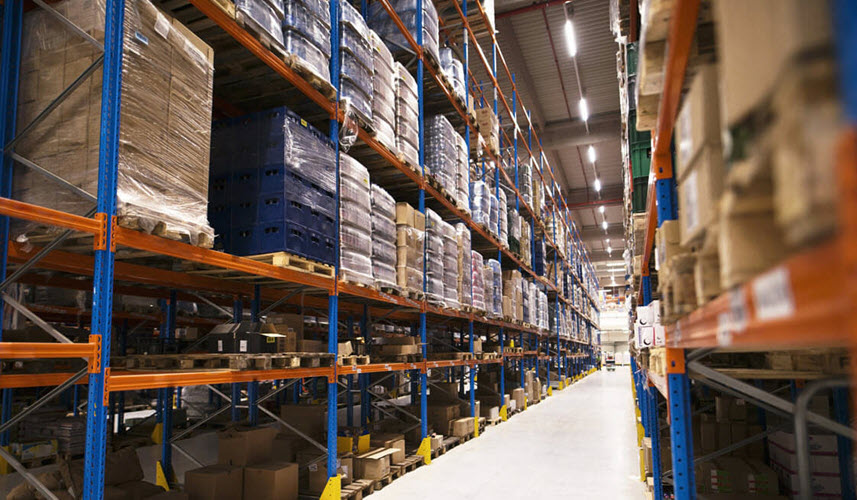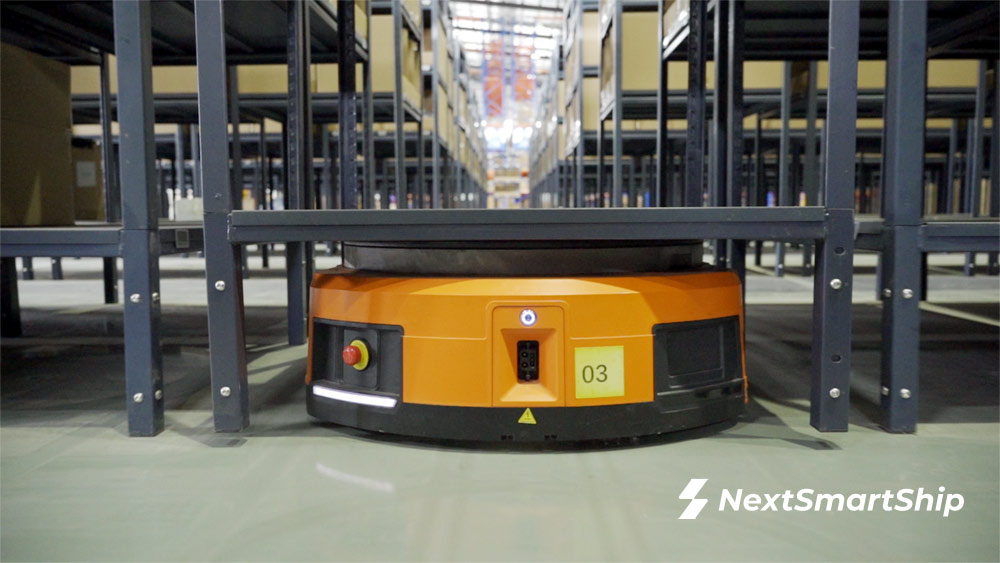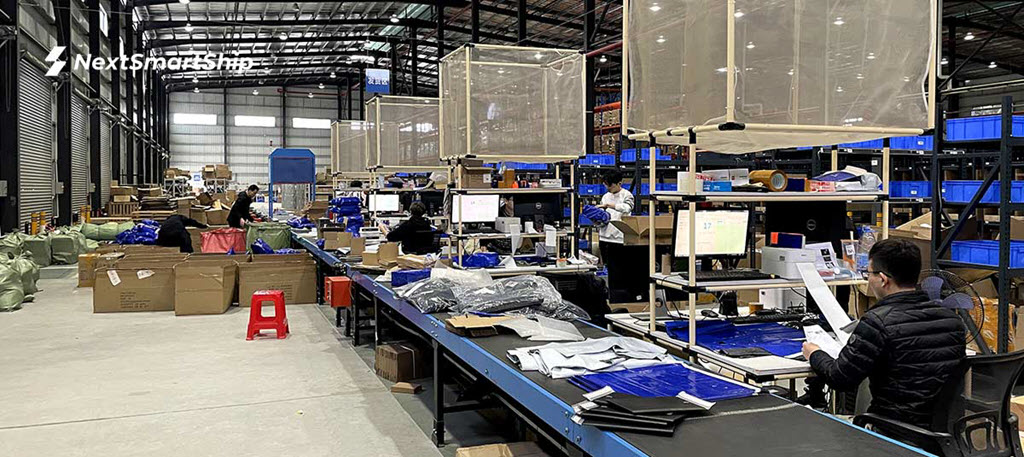Distribution centers are the heart of any ecommerce business, responsible for receiving, storing, and shipping products to customers.
This comprehensive guide provides an in-depth exploration of distribution centers, including how they work and the key functions involved in their operation.
Whether you’re an experienced ecommerce professional or just starting out, this guide is a must-read for anyone looking to take their business to the next level.
Table of Contents
- Distribution Centers: An Overview
- Understanding the Role of Distribution Centers
- Advantages of Distribution Centers
- How a Distribution Center Works?
- Types of Storage Containers in Distribution Centers
- Businesses that Use Distribution Centers
- Differences Between Warehouses and Distribution Centers
- Challenges Faced by Distribution Centers and Their Solutions
- Revamp Your eCommerce with NextSmartShip
- FAQ

Distribution Centers: An Overview
A distribution center is a facility designed to store and transport various goods during the supply chain process. It is a middleman between manufacturers, wholesalers, retailers, and other warehouses.
The main objective of a distribution center is to improve and streamline the final stage of the distribution process. In a distribution center, goods are received, stored, and then rapidly distributed to nearby locations, decreasing transportation times and expenses.
To achieve this, distribution centers are usually located on the outskirts of cities, near major industrial areas and logistics parks. They must be well-connected to main roads, ports, airports, and loading zones.
Understanding the Role of Distribution Centers
Distribution centers have a vital role in a company’s logistics, as they are responsible for receiving and dispatching goods as quickly as possible.
In this regard, their main objective is maintaining a minimum stock level. They operate with high-demand products, prioritizing service and immediacy.
The roles and responsibilities of a distribution center can be categorized into three main areas: receiving goods, storing them, and preparing and shipping orders.
Reception of Goods
When goods are received for storage, they are typically grouped into pallets and received on loading bays. Afterward, automated systems or forklifts convey the goods to the storage area or warehouse entrance.
Storage of Products
Short-term storage is necessary to facilitate quick order preparation and shipment. Distribution centers frequently employ industrial racking systems that offer immediate access to unit loads or operate on a first-in, first-out (FIFO) basis.
FIFO Live Pallet Racking Systems
This storage system is ideal for logistics centers that require a compact system while maintaining efficient stock rotation. Pallet loads slide on roller conveyors, ensuring dynamic movement inside the structure.
Under the FIFO system, the first unit to enter the structure is the first one to be retrieved and shipped out.
Adjustable Pallet Racking Systems
Mechanical pallet storage using forklifts is common in these racking systems, with access to the goods provided by aisles running parallel to the racking structure.
They are versatile and adaptable to carton flow rack systems and long-span shelving for lower-level order preparation.
Automated Storage Systems
These systems handle the location, loading, and unloading of goods autonomously. Furthermore, these racking systems enable adequate storage and retrieval of goods, reducing labor expenses and enhancing productivity.
Order Preparation and Shipment
Order preparation involves:
- Collecting goods for a specific order.
- Preparing them.
- Shipping them to their destination.

Advantages of Distribution Centers
Improved Service Quality and Reliability
Distribution centers play a crucial role in ensuring service quality and reliability. They are integral components of efficient supply chains and help to prevent errors while ensuring that goods are delivered on time and within the estimated timeframe.
Cost Optimization
They help to optimize costs by centralizing product reception and shipment tasks. This reduces storage and transport expenses, as products spend less time in storage and less time traveling unnecessary distances.
Service Flexibility
Distribution centers provide service flexibility, allowing companies to respond quickly to customers’ needs with short orders and product marketing deadlines.
By acting as intermediaries in the supply chain, distribution centers provide the necessary responsiveness to meet these deadlines.
Faster Delivery Times
These centers near major cities, logistics, and industrial areas allow companies to reduce delivery times. By strategically placing facilities in these locations, orders can be processed faster, and goods can be delivered to customers more quickly.
How a Distribution Center Works?
If you are thinking about utilizing a distribution center to support your eCommerce business, it’s crucial to have a comprehensive understanding of its operations.
Distribution centers handle inbound logistics, sorting and storing products before packing and shipping them to customers. The size of distribution centers varies according to the number and types of businesses they cater to.
Some centers, such as Amazon distribution centers, are as big as 800,000 square feet, while others are smaller.
To optimize order fulfillment processes, distribution centers use advanced technology and methods, including:
Automated Tools
These tools assist in loading and unloading vehicles, making manual processes more accessible and faster.
Automated Storage and Retrieval Systems (AS/RS)
They are responsible for automatically retrieving and depositing items between a pickup and a drop-off point, with the ability to handle tasks with exceptional speed, accuracy, and precision.
Automated Guided Vehicles (AGV)
AGVs transport goods from one part of the warehouse to another, using GPS to complete transportation tasks quickly.
Warehouse Management Systems (WMS)
WMS support warehouse layout planning, inventory monitoring, shipping progress tracking, labor management, dock and yard management, and reporting.
Inventory Control Platforms
Inventory control systems let distribution centers manage inventory, with popular systems including:
- ABC Inventory Control System
- Just-in-Time (JIT) System
- Fixed Period Ordering
- Fixed Order Quantity
- Computerized Inventory Control System
- Three-Bin System
- Outsourcing Inventory System
Collaborative Robots
Cobots work alongside human workers to complete tasks and are multifunctional and easy to set up and operate.
Depending on their specific requirements, distribution centers may use some or all of these technologies. Additionally, they may provide supplementary services like restocking and reverse logistics.

Types of Storage Containers in Distribution Centers
Distribution centers use specialized equipment to handle and store goods based on their characteristics and quantities. Five types of storage containers commonly used are:
Bulk Boxes
These are Pallet-sized boxes for bulk items, like loose parts or granular materials. Materials such as cardboard, wood, aluminum, steel, and plastic are utilized to manufacture distribution containers, with certain types including plastic liners.
Pallets
They are Flat, stable structures for heavy loads of goods that move effortlessly with pallet jacks or forklifts. They come in wood or plastic and hold up to one ton of goods stored on the floor or pallet racking.
Intermodal Containers
These are also called shipping containers, these store large quantities of goods for transportation by ship, rail, or truck.
Cases
These boxes that hold many items, like a wine case with 12 bottles. They transport cases on pallets and store on warehouse racking.
Businesses that Use Distribution Centers
Distribution centers are popular among businesses to simplify their shipping logistics, and companies like Amazon, Walmart, and IKEA have benefited from their usage.
Amazon operates over 1,100 fulfillment centers and ships 1.6 million packages daily in the US, while Walmart has 210 centers shipping general merchandise and dry groceries to customers daily.
IKEA, whose sales are 11% online, ensures an efficient delivery service with quick turnaround times by shipping products from the closest stock holding location to customers’ ZIP codes.
Differences Between Warehouses and Distribution Centers
Warehouses and distribution centers may seem interchangeable, but they differ in usage and functionality. The following are the key differences:
- Warehouses are designed for long-term product storage, whereas distribution centers prioritize speedy product delivery.
- Warehouses primarily store inventory, whereas distribution centers offer various services, including solutions for order fulfillment.
- Order processing is not handled by warehouses, but distribution centers provide packing and shipping solutions.
- Warehouses cater exclusively to businesses, while distribution centers handle business and customer needs throughout order management.
- Warehouse operations are relatively simple, whereas distribution centers manage many processes related to order management, making them more intricate.
Challenges Faced by Distribution Centers and Their Solutions
Distribution centers face several daily operations challenges that can impact their overall efficiency and profitability.
Here is a list of some of the top challenges and potential solutions to overcome them:
Finding And Retaining Talent
With low unemployment rates, finding and keeping skilled workers can take time and effort. Potential solutions include providing a good workplace culture, investing in training and professional development opportunities, and offering competitive remuneration and benefits.
Demand Forecasting
Accurately predicting product demand is crucial for maintaining appropriate inventory levels and avoiding stockouts or excess inventory. Utilizing data analysis tools and collaborating with suppliers can help improve forecasting accuracy.
Inventory Management
Balancing inventory levels with customer demand is a constant challenge. Implementing inventory tracking systems and utilizing just-in-time strategies can help optimize inventory levels.
Fixed Overhead Costs
Distribution centers can find rent, utilities, and other fixed costs burdensome, particularly during slower periods. Seeking cost-saving opportunities, such as energy-efficient lighting or shared warehouse space, can help reduce fixed overhead costs.
Item Damaging
Damaged products can result in lost revenue and dissatisfied customers. Implementing proper handling and storage procedures and regularly inspecting equipment can help prevent item damage.
Productivity
Ensuring workers are productive and meeting performance targets is essential for a thriving distribution center. You can achieve improved productivity by setting transparent performance expectations, delivering feedback and coaching, and incentivizing output.
Revamp Your eCommerce with NextSmartShip
If you want to elevate your eCommerce business, NextSmartShip’s modern distribution centers can provide the assistance you need. Our advanced technology and exceptional customer service can enhance your bottom line by streamlining your operations.
Discover the advantages of collaborating with NextSmartShip by contacting us today and taking the first step toward achieving your business objectives.

FAQs
Can you give an example of a distribution center?
FedEx has a distribution center network to manage its package sorting and delivery operations. The centers receive packages from different origins, sort them by destination, and dispatch them to their respective delivery routes.
What is another name for a distribution center?
A distribution center can have various names, such as a DC, a fulfillment center, a warehouse, a bulk break center, a cross-dock facility, or a package handling center, depending on its purpose and function.



